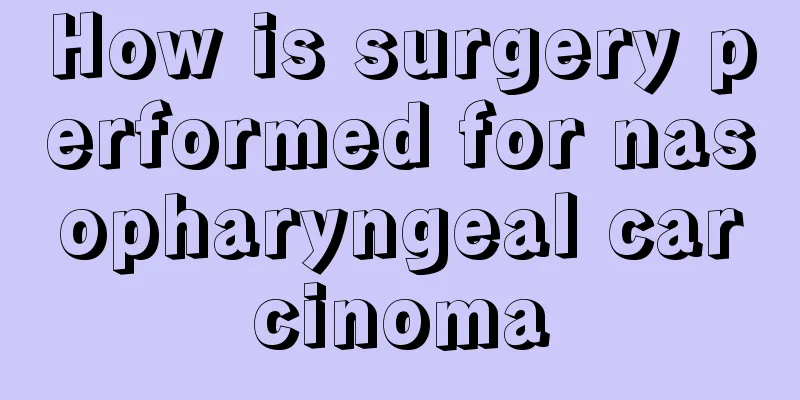How is surgery performed for nasopharyngeal carcinoma

|
Many patients are beginning to be familiar with nasopharyngeal carcinoma. We should choose the right treatment method, which is conducive to the treatment of nasopharyngeal carcinoma and puts patients at risk. The following small series introduces what is nasopharyngeal carcinoma surgery? Nasopharyngeal carcinoma is one of the most common tumors in China, with Guangdong, Guangxi, Hunan, Fujian and other provinces being one of the most common tumors in my country. The incidence rate in men is 2-3 times that in women, and the age group with the highest incidence rate is 40-50 years old. Surgical method for nasopharyngeal carcinoma: perform tracheotomy and intubation first, and then perform surgery under general anesthesia. Make a horseshoe-shaped incision along the inner side of the palatal tooth root 0.5 cm away from the alveolar ridge, cut the hard palate mucosa, peel it to the soft palate part under the mucosa, and remove some hard palate plates and vomers. Make a transverse cut on the nasal floor mucosa at the junction of the hard and soft palate to expose the top wall of the nasopharyngeal cavity, the anterior part of the walls on both sides, and the tumor. At the posterior edge of the nasal septum and the upper edge of the posterior nasal opening, cut the nasopharyngeal mucosa directly to the bone surface, perform blunt or sharp separation, cut along the junction of the nasopharyngeal top, and cross-cut the mucosa down to the junction of the oropharynx and the posterior wall of the nasopharynx, and remove the entire posterior nasopharyngeal top mucosa together with the tumor. Surgical treatment is suitable for: The pathological type is well-differentiated squamous adenocarcinoma or adenocarcinoma, as well as other cancers that are insensitive to radiation. The lesions are limited to the top wall, posterior wall or anterior wall. If there are no contraindications to surgery, resection of the primary lesion can be considered. All patients in II, III, and IV are not suitable for surgery. If there are residual or recurrent lesions in the nasopharynx or neck after radiotherapy, such as those limited to the posterior or anterior wall of the nasopharyngeal roof, without skull base bone damage, and in generally good condition, and radiotherapy is not suitable in the near future, resection of the lesion may be considered. When there is residual or recurrent disease in the neck, active patients may consider neck lymph node dissection if the extent is limited. |
<<: What are the signs of bladder cancer recurrence
>>: How to diagnose breast cancer bone metastasis
Recommend
Symptoms of oral ulcer Behcet's disease
Oral ulcers caused by Behcet's disease are co...
Can fecal incontinence be cured?
Fecal incontinence can be treated, mainly because...
Why does my back hurt due to poor sleep?
People need to sleep every day to rest their brai...
What are the uses of expired eye drops?
Eye drops are something we use frequently in our ...
Don't ignore the diagnosis of breast cancer anymore
Breast cancer can cause great harm to women's...
What are the symptoms before colorectal cancer?
As early as the middle of the 20th century, scien...
How many bones are there in the lower limbs
The human body structure is complex, especially t...
How to take care of short inward-curling hair
Girls all want to have a beautiful and fashionabl...
What does high risk of bladder cancer mean?
What does it mean to be at high risk for bladder ...
Emergency nursing measures for patients with gastric cancer and gastric bleeding
Gastric cancer is a malignant tumor of the digest...
Can nasopharyngeal cancer cause facial pain?
Can nasopharyngeal cancer cause facial pain? 1. N...
What to do if you are scalded by hot water
In daily life, we may get scalded by hot water du...
Three disadvantages of surgical treatment of esophageal cancer
Surgery is the first choice for treating esophage...
What foods to eat for strong hair
Every autumn, many people experience hair loss. A...
Can patients with kidney cancer eat kiwi fruit?
Everyone needs to urinate every day, and everyone...









